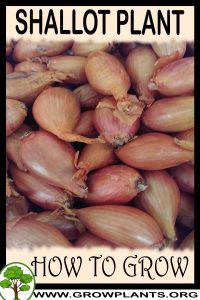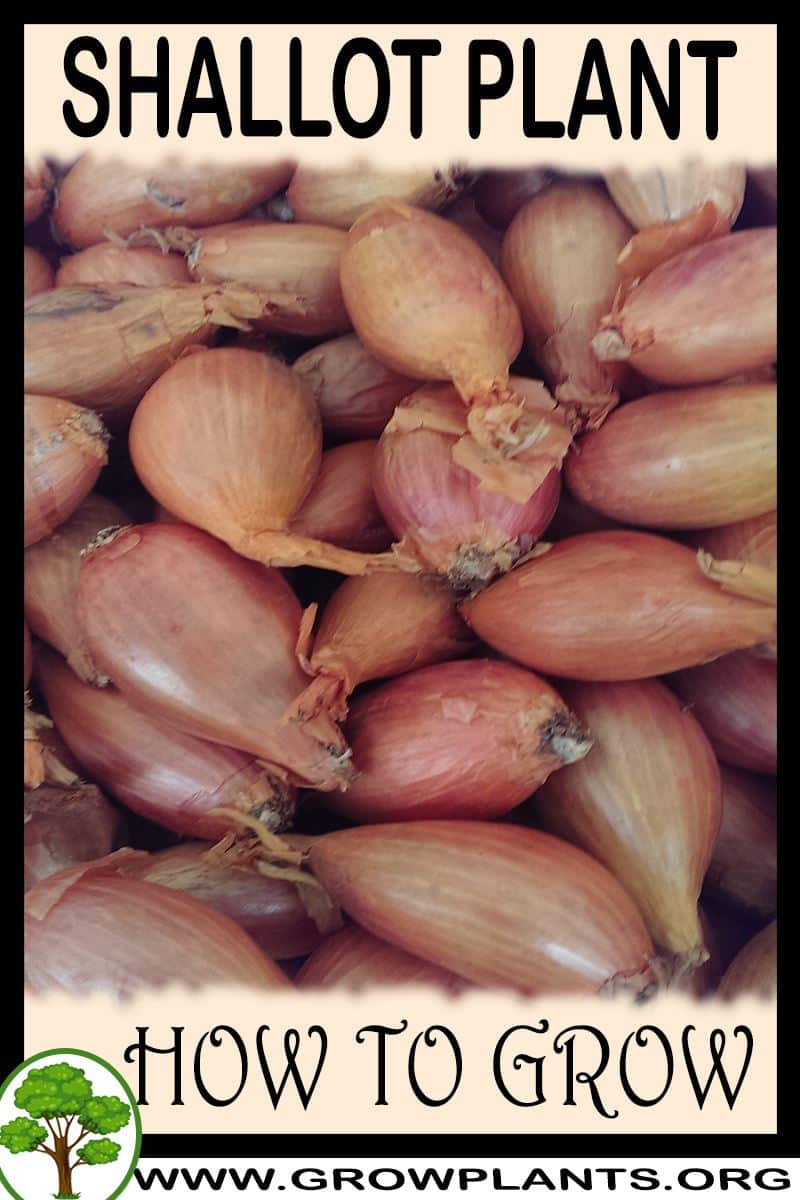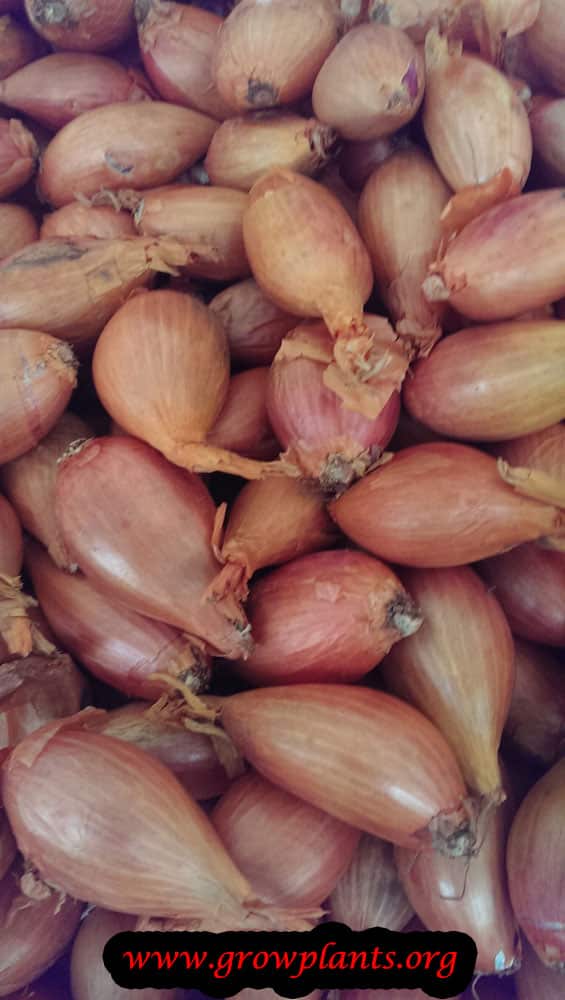
Shallot grow and care – herbaceous of the genus Allium also known as Bulb Shallot, Shallot is a perennial plant because the vegetative reproduction of the bulbs, the bulb is biennial and grown as annual plant, can grow in mediterranean, desert, subtropical or temperate climate and growing in hardiness zone 3-10.
Leaves are narrow and hollow grow in radial growth, leaves grow in groups linked together
Flowers small the color is white the flower grow on hollow stem as inflorescence in a umbel shape
Shallot bulbs
Bulb is spicy and made from layers that grow in radial round to oval shape the layers color purple
Shallot for sale – Seeds or Plants to Buy
How to grow Shallot growing and care:
Mulch, rich soil, well drain soil, free of rocks, nitrogen
What is the best way to start growing?
Plant / Seed / Bulb
Is it necessary to use vegetative reproduction?
No, but possible
Difficulties or problems when growing:
?
Planting season:
Spring, summer / Autumn depend on the cultivars
Pests and diseases:
Onion fly, Onion thrips
Pruning season:
All season
How to prune:
Stem of inflorescence
Size of the plant?
Bulb 1-10 cm (0.3-4 inches), leaves 10-50 cm (4-20 inches)
Growth speed in optimal condition:
Medium growing
Water requirement:
Average amount of water
Light conditions in optimal condition for growing:
Full Sun / Half Shade
Is it possible to grow indoor as houseplant?
No
Growing is also possible in a planter /flowerpot / containers:
Yes
Blooming information
Bloom season:
Summer
General information about the flower
White flowers grow in inflorescence on hollow stem
Thinning the bloom:
Recommend to thinning the stem unless you want the seeds
Pollination is done by:
Bees
Edible leaves
Leaves harvesting season:
All year
How to harvest the leaves?
Two possibility separate leaves or all the leaves of the plant (better all together with the bulb)
Information about leaves:
Leaves are narrow and hollow grow in radial growth, leaves grow in groups linked together
Uses of Shallot leaves:
Eaten raw, cooked, spice, herbs
Edible Roots
Information about the bulb:
The bulb is made from layers that grow in radial round to oval shape the layers color purple
When to pull up bulb:
Summer / Autumn
Uses of bulb:
Eaten raw, cooked, spice, salad
Vegetative Reproduction
Vegetative Reproduction Method:
Bulbs
Preferred time for vegetative reproduction:
All year
Time to grow roots in vegetative reproduction:
If the bulb is fully grow, in the beginning of the season it grows the roots
Treatment for vegetative reproduction:
The same as fully grown plants, sometimes more water
Scientific name:
Allium cepa var. aggregatum
Categories
| Blooming Seasons |
|
|---|---|
| Edible Parts |
|
| Culinary uses |
|
| Flower colors |
|
| Climate |
|
| Harvest Season |
|
| Plant growing speed |
|
| Plant life-form |
|
| Plant Uses |
|
| Planting Season |
|
| Plants sun exposure |
|
| Watering plants |
|
| Hardiness zone |
|



